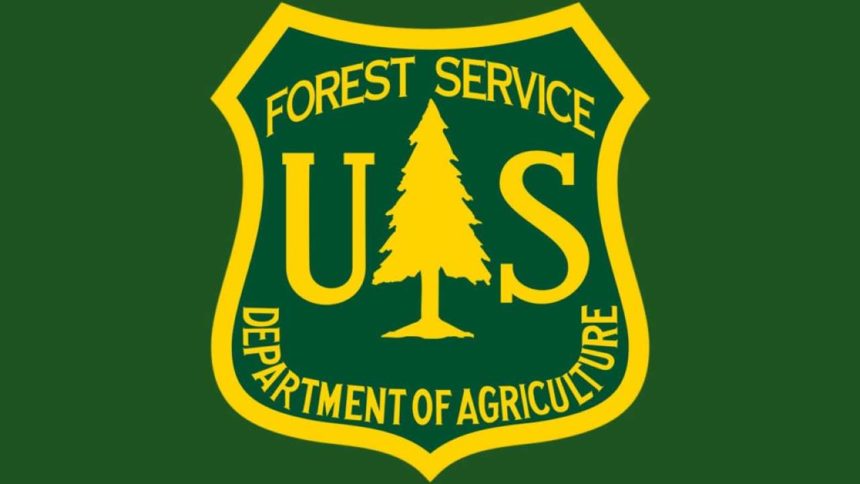Deschutes National Forest, Crooked River Grassland due $41 million for wildfire risk reduction efforts

Infrastructure bill to fund $131 million for Forest Service 10-year wildfire strategy
BEND, Ore. (KTVZ) — Agriculture Secretary Tom Vilsack announced on Monday 10 initial landscapes to receive $131 million in Bipartisan Infrastructure Law investment to begin implementation of the Wildfire Crisis Strategy in 2022, including more than $41 million over three years for the Deschutes National Forest and portions of the Crooked River National Grassland.
The Central Oregon Landscape covers state, private, and federal lands on the east side of the Cascades. One of the reasons Central Oregon was chosen is because of its history with collaboration and national leadership in implementing the Collaborative Forest Landscape Restoration program, Joint Chief’s Projects, and National Cohesive Strategy, according to the Deschutes National Forest, whose announcement news release continues in full below:
This significant investment in the Central Oregon landscape will continue our work in reducing the risk of fire transfer to our numerous growing communities and critical infrastructure, including our watersheds that supply public drinking water, and will build upon work already accomplished.
The Forest and Grassland expects to receive $4.5 million in funding this year from the Bipartisan Infrastructure Law and $41.3 million in total funding for fiscal years 2022, 2023, and 2024.
The Deschutes National Forest, along with state and other partners, expect to treat an additional 5,000 acres in 2022 and more than 50,000 acres by 2024.
Central Oregon is fortunate to receive this funding, which will support increased public engagement with our communities, reduce the potential for catastrophic wildfire, make our forests more resilient to insects and disease at a landscape scale, and protect our critical watershed both for wildlife and sources of community water.
Our focus along with our partners within the Deschutes Collaborative Forest Project, local, state and other federal agencies is on strategic, science-based landscape scale treatments that cross boundaries and meet the scale of the problem, initially starting with those places critically at risk.
Having healthy, resilient forests, which can recover more quickly if we do have wildfires, is important to the Central Oregon economy, given the significant amount of our economy that is dependent on tourism and recreation. Getting these funds to help maintain those forests and that economy is important.
Our partners in accomplishing this work in the coming years include the following:
Oregon Department of Forestry, Deschutes Collaborative Forest Project, Central Oregon Forest Stewardship Foundation, Deschutes Trails Coalition, Natural Resources Conservation Service, Discover Your Forest, Upper Deschutes Watershed Council, Central Oregon Shared Stewardship Alliance, Deschutes County, The Nature Conservancy, Deschutes Land Trust; Walker Range Fire Patrol, Oregon Living with Fire, and our local communities.
U.S. Forest Service Region 6 news release:
Forest Service to receive $29.1 million for additional wildfire risk reduction on high-risk landscapes in central OR, WA
PORTLAND, OR – April 12, 2022 – Work to confront the wildfire crisis continues in the U.S. Forest Service’s Pacific Northwest region this year to reduce wildfire risk to communities and support forest health.
The U.S. Department of Agriculture’s Forest Service announced $131 million to begin implementation of “Confronting the Wildfire Crisis: A Strategy for Protecting Communities and Improving Resilience in America’s Forests,” including $29.1 million in funds directed to increasing treatments on two landscapes in the Pacific Northwest Region.
According to an agency assessment, less than ten percent of firesheds across the country are responsible for eighty percent of community exposure to wildfire. These initial landscapes are the first part of a large-scale, science-backed strategy designed to focus additional support to landscapes where treatments will have the most immediate and largest effect.
- In central Washington, the Central Washington Initiative (CWI) landscape spans national forests and State and private lands across four counties, including five high-risk firesheds (Twisp, Chiwaukum, Wenatchee, Leavenworth, and Cle Elum) and on the Okanogan-Wenatchee National Forest. Restoration work across this landscape capitalizes on strong, existing partnerships to reduce the risk of wildfire through targeted investments over the next 10 years.
- In central Oregon, the selected landscape covers State, private, and Federal lands on the eastside of the Cascades, including the Deschutes National Forest & Crooked River National Grassland. This area is rich in collaboration and has been a leader in implementing the Collaborative Forest Landscape Restoration program, Joint Chief’s Projects, and the National Cohesive Strategy. Additional investments will continue to reduce the risk of fire transfer to numerous, growing communities and critical infrastructure and build upon work already accomplished.
The funding from the Bipartisan Infrastructure Law will provide for 29,000 acres in fuels reduction treatments this year across these two landscapes (24,000 in Washington, and 5,000 in Oregon) and for around 174,000 acres in treatments between 2022 and 2024 across the two landscapes (124,000 in Washington, and 50,000 in Oregon).
“It’s important to know that in addition to work we’ll do in Central Washington and Central Oregon, we’ll also use available funding sources to continue important fuels reduction and Forest health work across all the national forests in Washington and Oregon,” said Glenn Casamassa, regional forester for the U.S. Forest Service - Pacific Northwest region.
The Forest Service in the Pacific Northwest will continue to work with the States of Washington and Oregon, Tribes, partners, and communities, to conduct fuels reduction treatments, such as mechanical thinning and prescribed fire, along with aquatic restoration projects. A landscape scale approach is necessary to improve overall forest health and resiliency.